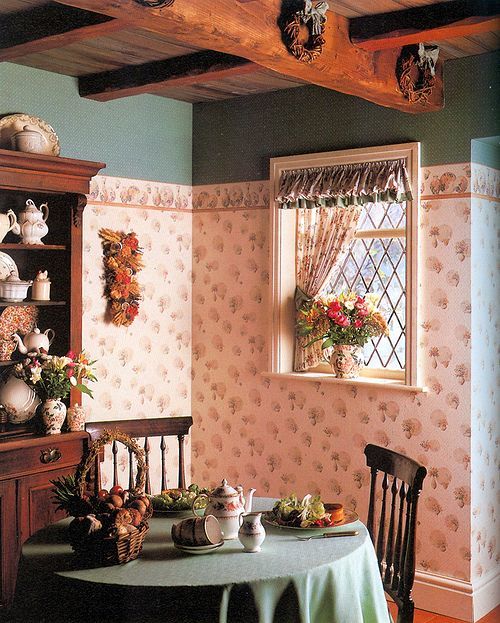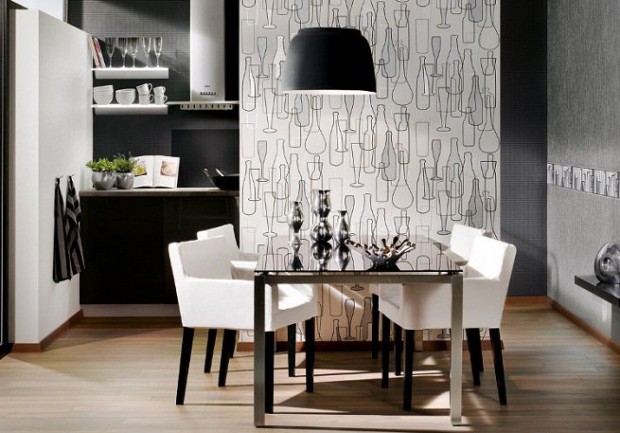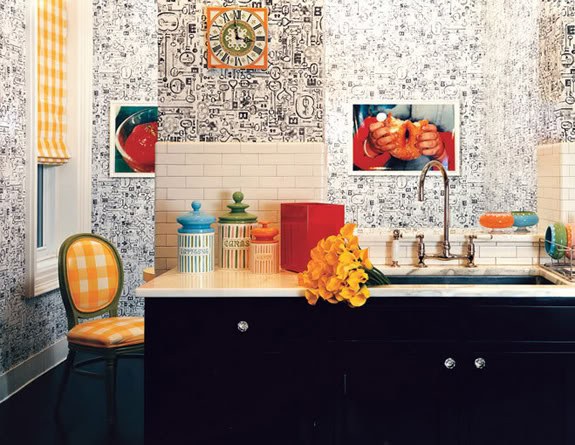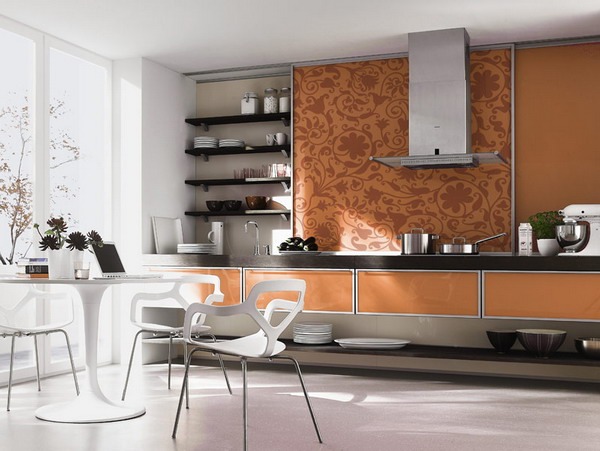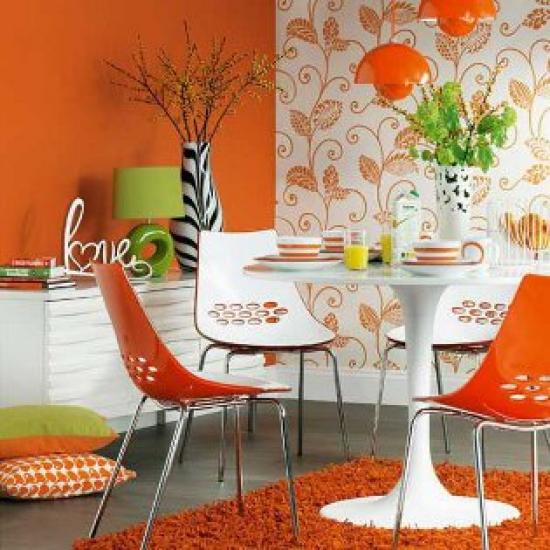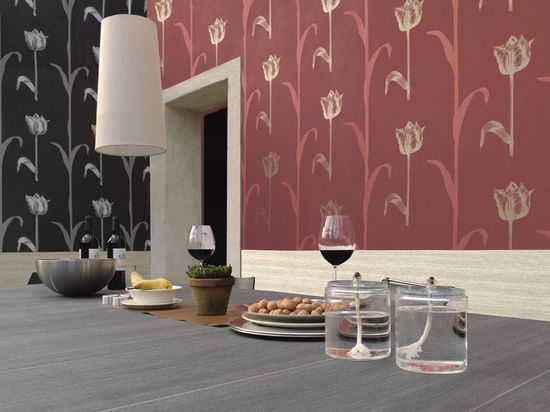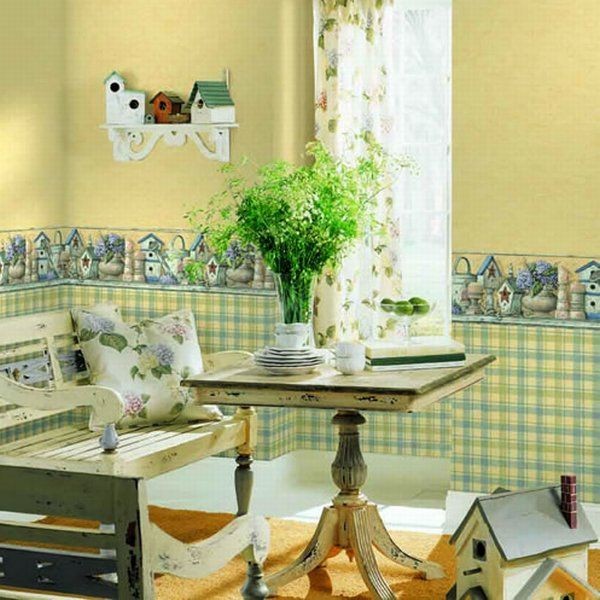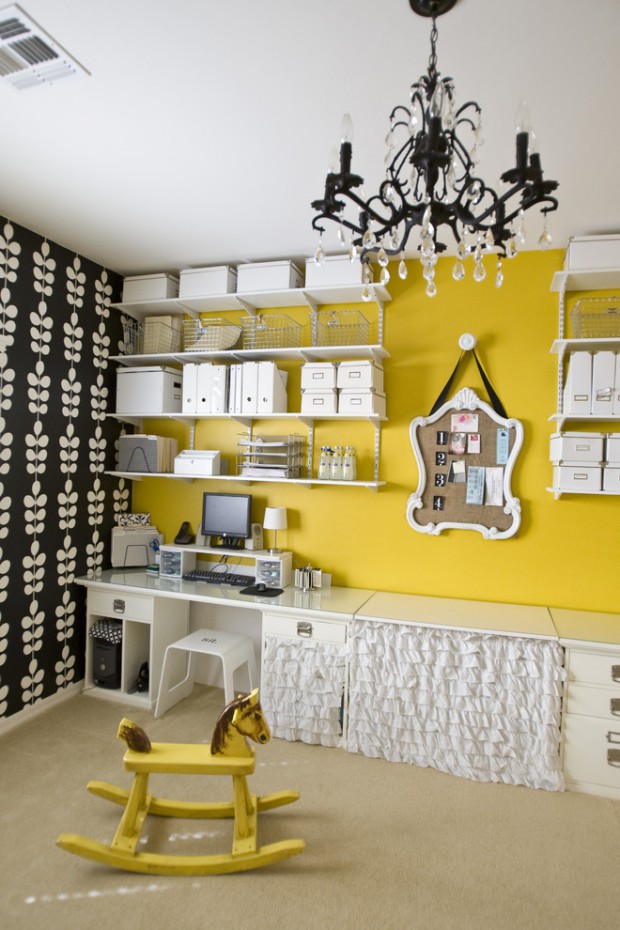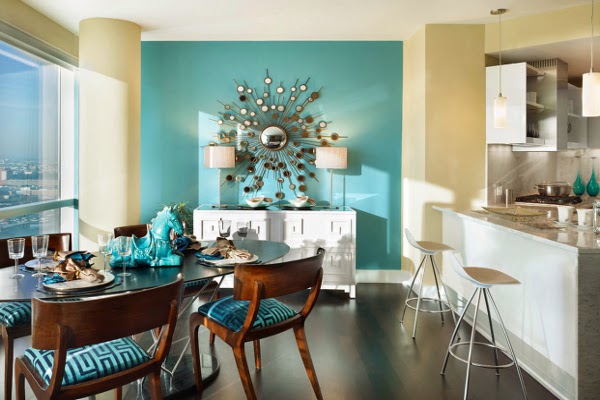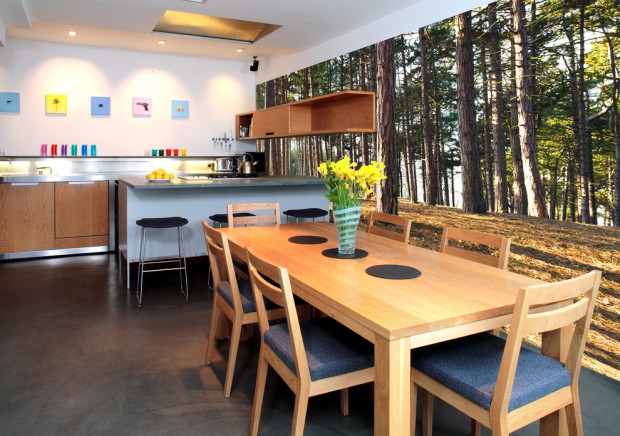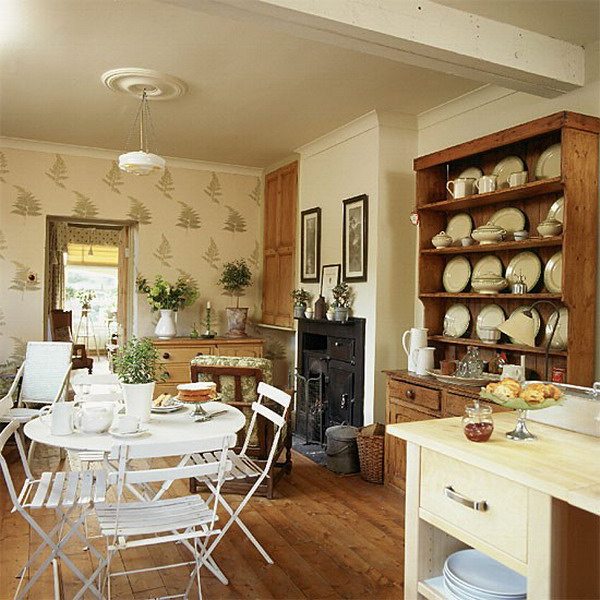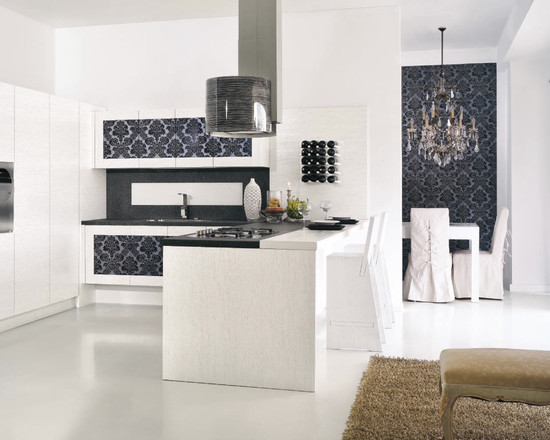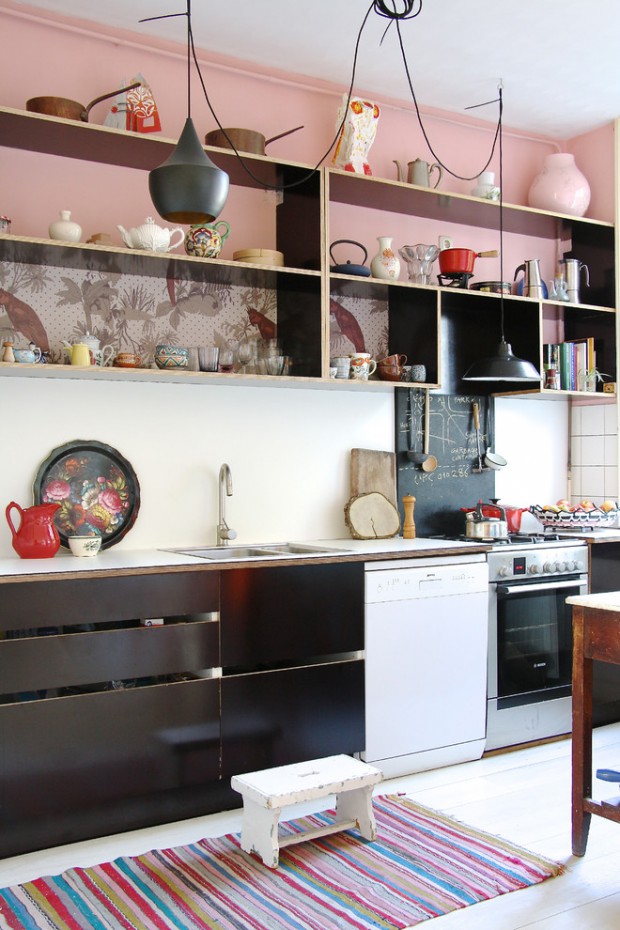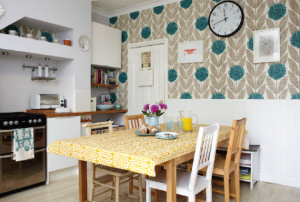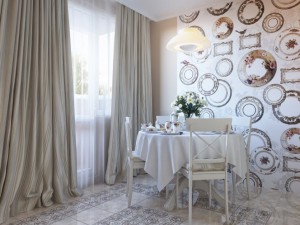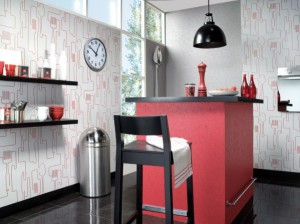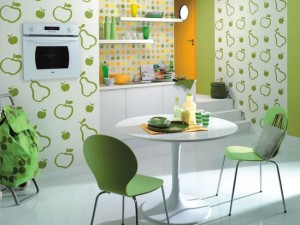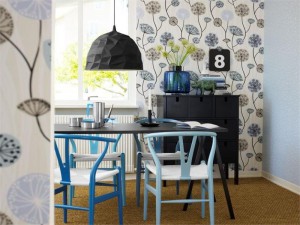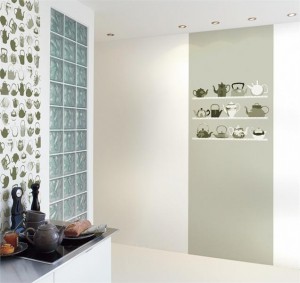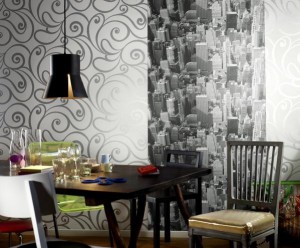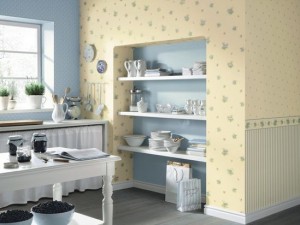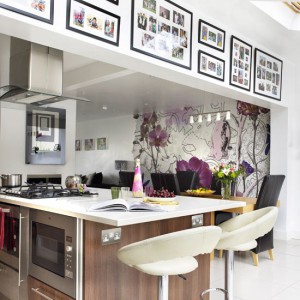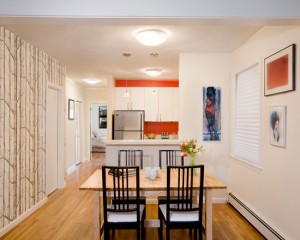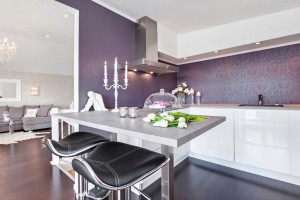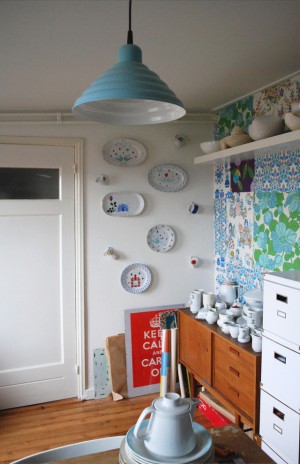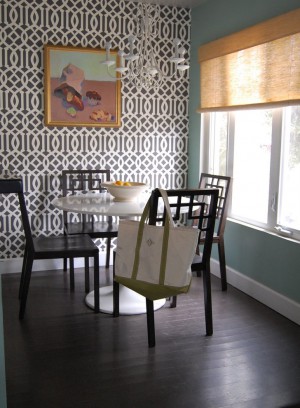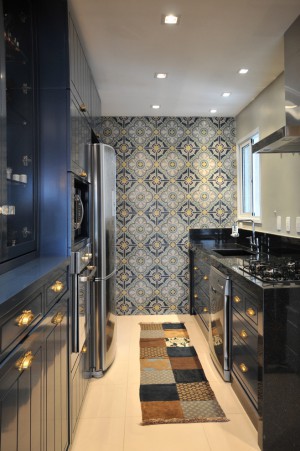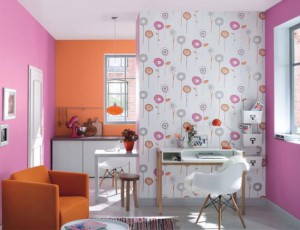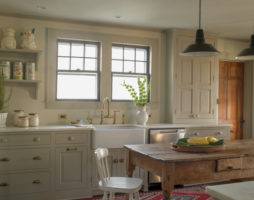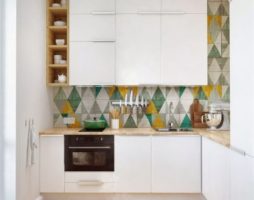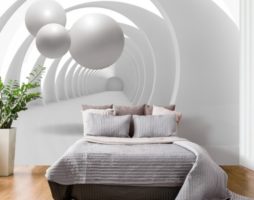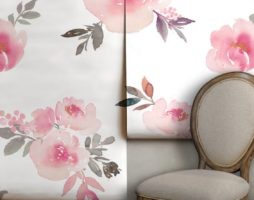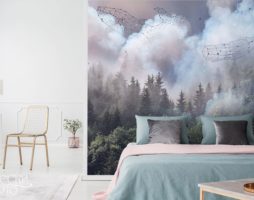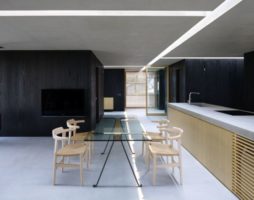Combining wallpaper in the kitchen is a great opportunity to bring personality to the room. To date, this is a fairly common version of interior design, which is gaining more and more popularity every year. Combining wallpaper will help divide the kitchen into functional areas, hide the flaws of the room, visually expand the space in a small room.
In addition, it is a wonderful decorative element that emphasizes the individuality of the kitchen. You can combine not only colors, but also texture, pattern.
Pros of combining wallpaper in the kitchen
- By combining wallpapers of different colors, you can easily divide the kitchen into zones. This is especially true for studios and kitchens, which combine not only a place for preparing meals and a family dinner, but also a place for receiving guests.
- Creating an accent wall (corner) will help draw the attention of the owners and guests of the kitchen to the successful features of the layout, well-chosen decor elements, beautiful furniture or appliances.
- Using different shades of the same color or contrasting colors will help visually enlarge the room. This effect can also be achieved with vertical and horizontal stripes of contrasting wallpaper.
- Wallpaper combination makes the kitchen more dynamic.
- Using a combination of wallpaper of different colors, you can hide individual flaws in the room. For example, an unsuccessful layout, disproportionate size, low ceiling.
Rules for combining wallpaper in the kitchen
- When choosing wallpaper, it is worth considering the style features of the kitchen, its advantages and disadvantages. In a small kitchen, you should use light colors and shades, in a large room you can go closer to dark shades.
- If the room has low ceilings, you can use wallpaper with vertical stripes, or vertically combine wallpaper with each other (wide and narrow stripes).
- It is very important to choose wallpapers that will blend well with each other. To achieve a beautiful and elegant effect, you can choose wallpapers with the same ornament, choose a single theme. For example, a light floral pattern on one wallpaper, which turns into a pattern with exotic birds in bright colors on the other.
- To create a smooth transition between different wallpapers, it is important that the patterns are approximately the same size. If a sharp transition is planned, the sizes of the patterns may be different.
- Wallpapers of different shades of the same color look great in the kitchen. With the right approach, you can even enlarge the room with this design. Visually expand the space shades of beige, white, yellow, cold light shades of blue and blue-green.
- Bright colors and motifs should be added in small quantities. A popular option is when one wall of the kitchen is decorated in a bright color scheme (bright wallpaper, large drawing, photo wallpaper), and the rest of the walls are made in soothing discreet colors.
- Wallpaper can differ not only in color, but also in texture. It can be smooth wallpaper combined with rough, glossy combined with matte.
- It is better to choose wallpapers of the same price category and the same quality. This will give the kitchen integrity and unity.
- It is worth paying attention to the thickness of the wallpaper. To avoid uneven joints, it is better to combine wallpapers of the same thickness. Then they will gently blend into each other.
- It is important to take into account the style features of the combined wallpaper. They can stick to the same design direction. This option is simpler, they are easy to combine with each other.
- Wallpapers of different styles require special attention. They need to be combined somehow. For this, decor elements, furniture, appliances, borders and other elements are suitable. If the room is divided into functional areas using wallpaper, different styles are allowed in different areas.
Features of vertical wallpaper combination
- Everyone knows that vertical stripes visually raise the ceiling. They are often used in the design of kitchens with low, oppressive, overhanging ceilings.
- In addition, this technique is popular in disproportionate rooms, when the length is disproportionately greater than the width.
- Vertical stripes can also combine wallpaper. Most often, contrasting color combinations are used: bright stripes on a light background. Vertical division can be symmetrical, asymmetric, unifying. Each type has its own advantages:
- Symmetrical vertical division. The opposite walls of the kitchen are mirrored with the same wide strips of contrasting wallpaper (one strip on each wall). This design creates an interesting optical effect, which will be useful if the kitchen looks like a corridor (when the length is disproportionately greater than the width). Symmetrical vertical division contributes to equalize the dimensions of the kitchen.
- An asymmetrical vertical division creates the same optical effect as a symmetrical one, but it also adds dynamics to the kitchen. In this case, one wall is pasted over with a wide strip of contrasting wallpaper, and on the opposite wall (closer to the corner) several thin strips are laid out with the same wallpaper.
- Unifying vertical wallpaper combination. This technique is used in cases where contrasting colors are used in the design of the kitchen, which must be “connected”. If the opposite walls of the kitchen are covered with wallpaper of different colors, the wall between them is decorated with stripes of this wallpaper. This design contributes to a smooth transition from one color to another.
Features of horizontal wallpaper combination
- If the ceilings in the room are high enough, you can resort to dividing the walls using a horizontal wallpaper combination. This technique is popular in small rooms with high ceilings. Just two or three alternating stripes are enough and the room will appear wider. This technique will bring the width of the room closer to its height. It would be appropriate to alternate wallpapers that have different colors, patterns or textures.
- The horizontal division of the wall one to two (the lower strip is equal to 1/3 of the height of the room, the upper one is 2/3) is an elegant and beautiful option that is often used in modern apartments. For this design, there are a number of classic combinations:
- bottom - plain wallpaper or wallpaper with a small pattern; top - striped wallpaper, with a large floral pattern or monograms;
- bottom - striped wallpaper; top - plain wallpaper or wallpaper with a small pattern;
- bottom - wallpaper with a large floral pattern or with monograms; the top is plain.
- At the junction of the wallpaper, you can use a border, molding or dividing bar.
- For horizontal combinations, wallpapers with different textures are especially well suited.This will add richness to the interior of the kitchen.
- When combining wallpaper horizontally, you can set the horizon at the level of the window sill, extending it with a border, molding or dividing strip. This will create the effect of a single horizon.
- There are many ways to horizontally combine wallpaper in the kitchen, but dividing the wall one to two is still the most common of them. This is due to the desire of the owners of the apartment to add a little elegance to their lives. Such techniques were popular in the interior design of the luxurious mansions of English aristocrats. They decorated the lower part of the wall with wooden panels. To bring the interior of the kitchen closer to such an aristocratic option, you can pick up the wallpaper of the lower strip “under the tree”. For the top band, you can choose exotic, floral or geometric ornaments and patterns. Such a kitchen will resemble a luxurious English living room.
- There is a horizontal combination of wallpaper, when the lower strip is not 1/3, but 2/3 of the height of the wall. But such a design is quite risky, because it can visually lower the ceiling. This decor should only be used in a kitchen with very high ceilings.
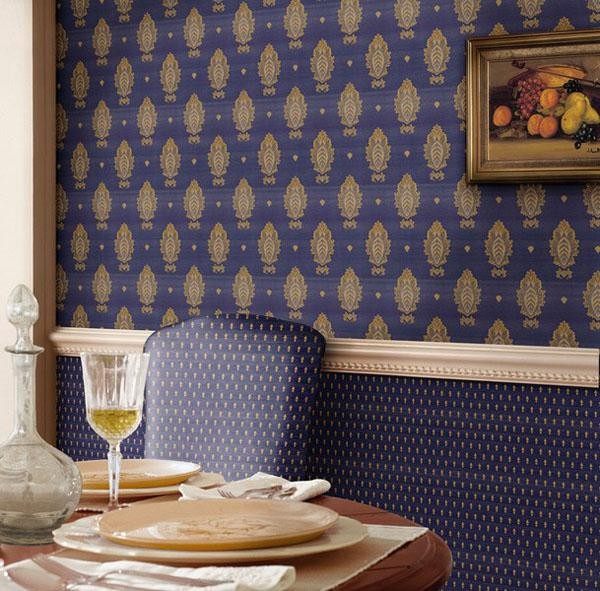
a combination of wallpaper of the same color but with a different pattern, separated by a wall baguette
Features of combining contrasting wallpapers
- The combination of contrasting colors and shades requires care and special attention, especially when it comes to wallpaper combinations. It is necessary to select shades that combine with each other. Almost universal colors are white, black, beige, gray, gold shades. They perform well in a wide variety of color combinations: they can soften dark and bright colors, or brighten up light and dull ones. But even when working with them, you need to be careful.
- The combination of black and white is a classic and popular solution. The predominance of white in this combination visually expands the room. It is more important to remember that the predominance of black absorbs space. The latter option is not recommended for use in small rooms.
- Using wallpaper in contrasting colors, you can zone the room, which is especially important in the kitchen. The working area can be decorated in darker and more practical colors.
Features of creating an accent zone
- By combining wallpaper in the kitchen, you can create an accent wall. This is a very common technique in modern interior design. For the background, wallpaper of light, discreet, soothing colors is usually chosen. Most often, these are shades of white or beige (beige-orange, beige-pistachio and others), and the accent zone is covered with bright wallpaper. A part of a wall, a whole wall or adjacent parts of walls (corner) can act as such a zone.
- To maintain balance, it is advised to add the same accent color to the opposite part of the kitchen. To do this, you can use furniture, appliances or decor elements.
- When choosing a bright color for an accent wall, it is important not to forget that people spend a lot of time here. Separate colors can not only squeeze the space, but also put pressure on the psyche. The color scheme of the kitchen will directly affect the mood of a person. Therefore, you should carefully consider the choice of color and its combination with background wallpaper. For an accent, it is advised to use orange (gives energy), yellow (uplifts), blue (the color of calm and tranquility), lilac (not suitable for everyone), a sea wave (promotes a good rest). First of all, the choice of color depends on the preferences of the owners of the apartment, because color perception is quite subjective.
- It is worth noting that dark colors (black, brown, dark purple and other dark shades) are unlikely to be appropriate here, since they may not become an accent, but a dark spot.If, nevertheless, there is a great desire to use dark colors, they need to be diluted with large light patterns or ornaments. The color of the picture can overlap with the colors of the main wallpaper. This will create a special uniform style for the entire kitchen.
- Wall murals can become a bright spot. The advantage of using photo wallpapers with a distant perspective is that they visually increase the space. Landscapes are best suited: forest, waterfall, seashore. Wall murals depicting castles and large ballrooms are popular, but they are more appropriate in living rooms.
- An accent wall will also help with a non-standard kitchen layout. The effect of the corridor can be reduced by focusing on the far wall. This visually brings it closer.
- An accent wall will help draw attention to the merits of the kitchen. For example, to the beautiful decor of the recreation area, a large window. Plus, it's a great distraction. Defects in the room will be less noticeable.
Combination of wallpapers of the same shade
- In the kitchen, there is often a combination of wallpaper of the same shade, but with different patterns. Usually one wall is covered with wallpaper with a pattern, and the rest is left smooth. Depending on the chosen color and pattern, such a design decision can lead to a variety of results: from baroque luxury to modern.
- There are design options when all the walls are covered with wallpaper without patterns, but there are horizontal or vertical stripes with a pattern on them.
- The main thing is not to overload the interior. In the case of combining wallpapers of the same color, the pattern should not be much and it should be the same. Deviations from this rule are possible, but very risky.
The use of wallpaper inserts in the design of the kitchen
- Wallpaper inserts have become a fairly new way of decorating the interior of the kitchen. To do this, wallpapers can be used in contrasting or overlapping colors with the background wallpaper. The pattern and texture can also vary or overlap.
- Wallpaper inserts can be designed in completely different ways. In some apartments there are even wallpapers decorated in a baguette.
- Most often, wallpaper inserts mask defects in the kitchen: they seal niches and mask uneven corners.
- Even design is popular when several types of wallpaper are used as inserts. This decor is similar to shreds sewn together.
- Wallpaper combination patchwork technique is a laborious task. However, as a result, the walls become similar to ancient Byzantine mosaics.
Kitchen decor
- Combining wallpaper in the kitchen requires special attention to all interior details. The decor can greatly overload such a room. It should resonate with the overall design of the kitchen.
- If the kitchen is divided into functional zones, more attention should be paid to the color and stylistic balance within these zones.
- If the kitchen is not zoned, you can bring unity to it with the help of decor. If one corner is decorated in bright, catchy colors, you should balance it by placing elements of the same color in the opposite corner. It can be something massive (large furniture, appliances) or something small (a painting, several figurines, a table, a floor lamp).
- Textiles should act as a continuation of the color scheme. If wallpapers of similar shades are combined in the kitchen, textiles may have their own shade, but if contrasting colors were used in the design of the kitchen, it is better to stick to one of these colors in textiles. Usually choose either the least common color in the room, or the brightest.
Combining wallpaper in the kitchen requires creativity. The most important thing is to choose the most suitable of all possible options. With the help of an individual approach, suitable colors, patterns and textures, you can turn the kitchen into a real work of art.
back to index ↑Photo gallery - combining wallpaper in the kitchen:
- CREATOR: gd-jpeg v1.0 (using IJG JPEG v62), quality = 90
